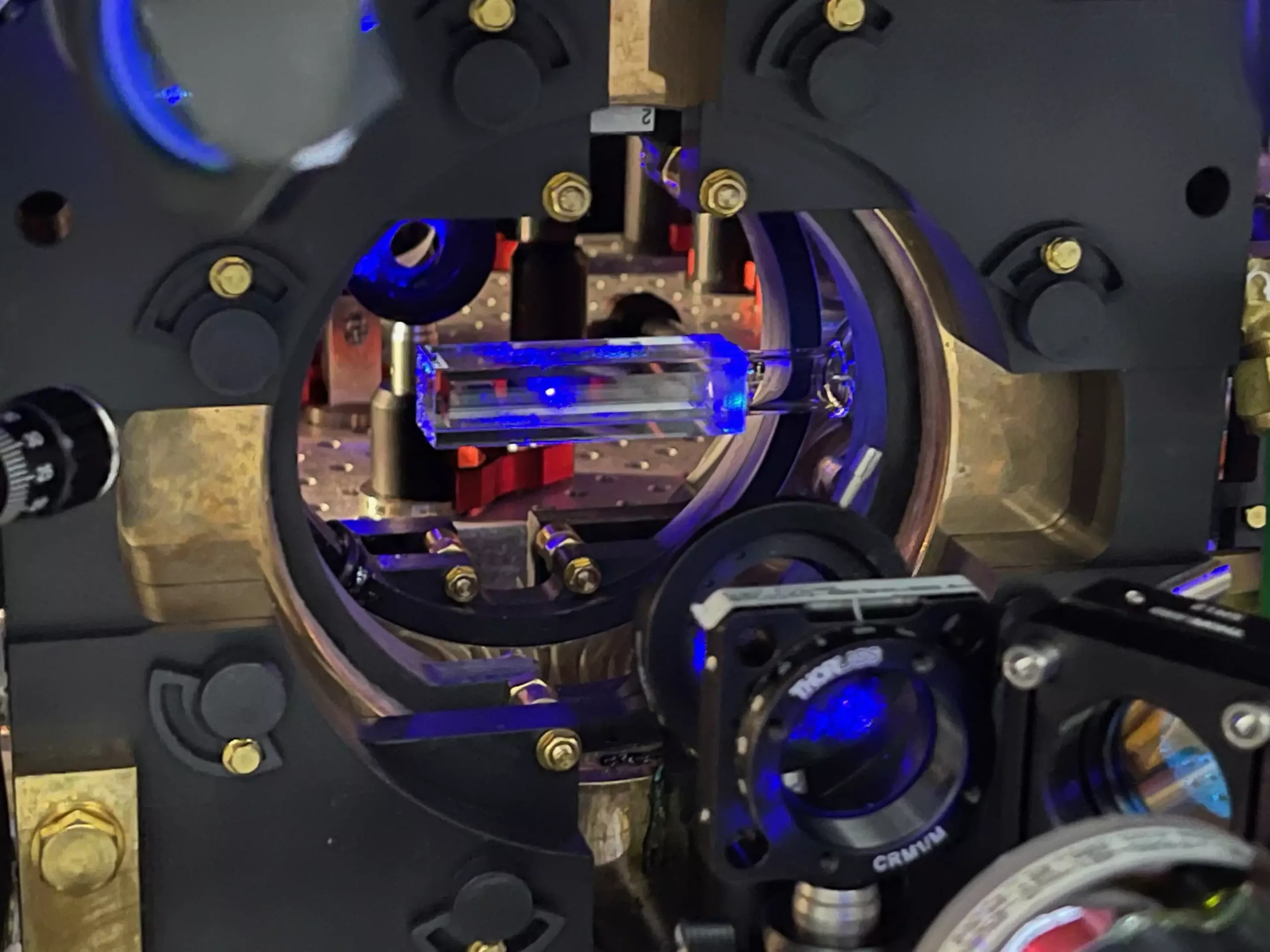Quantum physics has revolutionized the way we understand the microscopic properties of materials. Recent advancements in analog quantum processors have led to the emergence of quantum-gas microscopes, which have proven to be powerful tools for studying quantum systems at the atomic level. These devices provide high-resolution images of quantum gases, allowing individual atoms to be detected and analyzed.
A team of researchers from ICFO in Barcelona, Spain, led by ICREA Professor Leticia Tarruell, recently built their own quantum-gas microscope named QUIONE. This groundbreaking microscope is the only one in the world capable of imaging individual atoms of strontium quantum gases and the first of its kind in Spain. The team’s research, published in the journal PRX Quantum, focuses on quantum simulation and the potential applications of quantum-gas microscopes in understanding complex materials.
The singularity of this experiment lies in the team’s ability to bring the strontium gas to the quantum regime, place it in an optical lattice for interactions, and apply single-atom imaging techniques. Unlike previous microscope setups that used alkaline atoms like lithium and potassium, strontium offers unique properties and more opportunities for experimentation due to its optical spectrum. The properties of strontium have made it a popular element for quantum computing and quantum simulation applications in recent years.
To build QUIONE, the researchers first lowered the temperature of the strontium gas using laser beams to almost absolute zero, allowing quantum mechanics to govern the behavior of atoms. Then, they activated the optical lattice to arrange atoms in a grid, facilitating interactions and quantum tunneling between atoms. This simulation of quantum dynamics mimics the behavior of electrons in certain materials, providing insights into the complex behavior of such materials.
With the quantum-gas microscope in place, the researchers were able to capture images and videos of the strontium quantum gas at the atomic level. They observed quantum tunneling phenomena where atoms jumped between lattice sites, demonstrating their inherent quantum behavior. Additionally, the researchers confirmed the presence of superfluidity in the strontium gas, a quantum phase of matter that flows without viscosity, through interference patterns captured by their equipment.
The successful construction and operation of QUIONE mark a significant advancement in the field of quantum physics and simulation. The researchers believe that by adding strontium to the list of available quantum-gas microscopes, they can simulate more complex and exotic materials in the future. This could lead to the discovery of new phases of matter and further insights into the behavior of quantum systems.
Quantum-gas microscopes like QUIONE offer a unique and powerful approach to studying quantum systems at the atomic level. The ability to image individual atoms and observe their quantum behavior opens up new possibilities for quantum simulation and understanding the complex properties of materials. The research conducted by the ICFO team provides a glimpse into the exciting future of quantum physics and its potential applications in various fields.


Leave a Reply